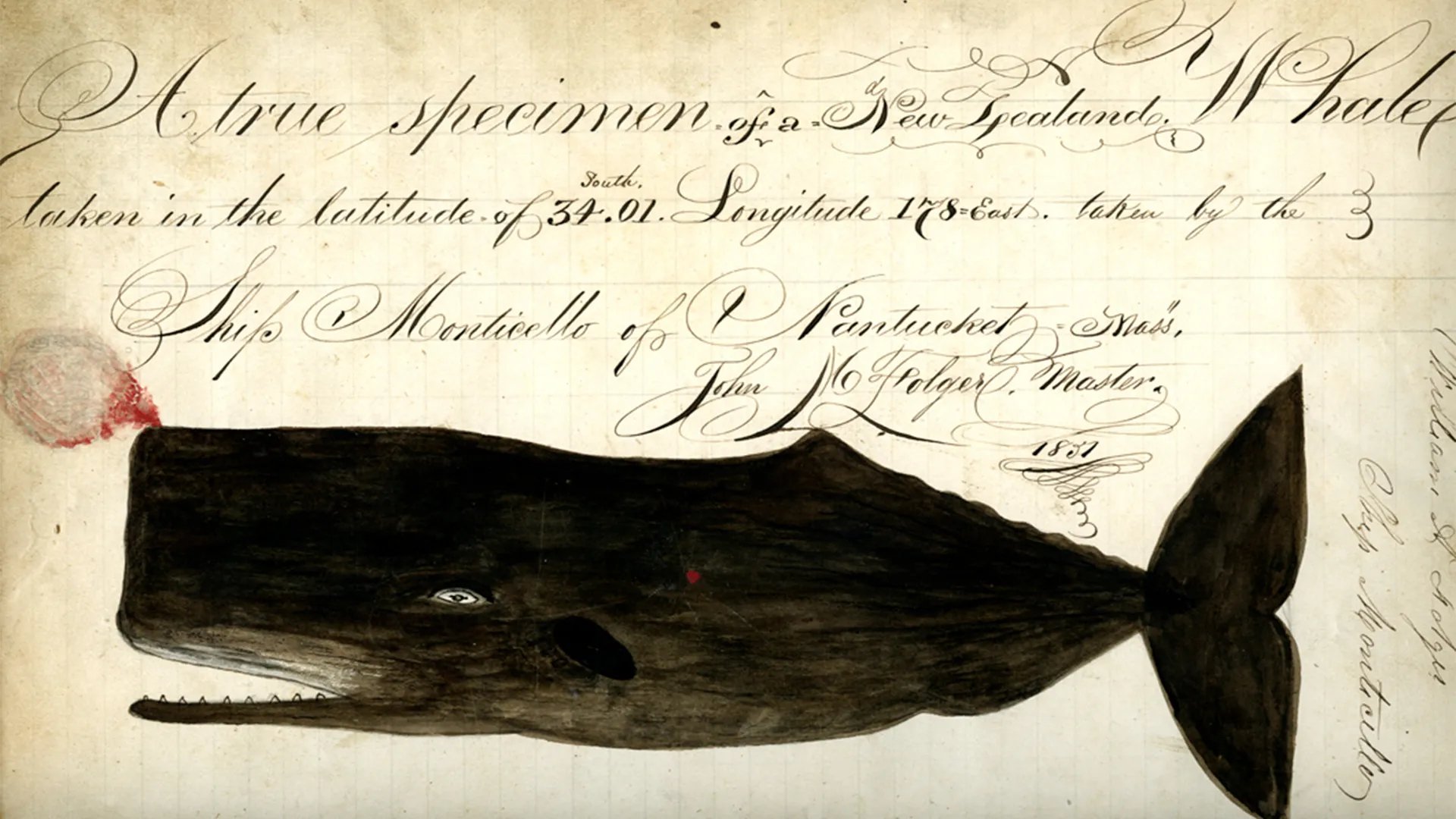Whale Illustrations
Whale art was an abiding interest of Melville’s. As a writer who grappled with the challenges of representing in words such a mysterious creature, he was intrigued with the way artists in other media approached the task. Animal illustration, in particular, also raised for Melville a host of pressing questions about the nature of life and the relation between animals and their environments.
If you look at these drawings, you will notice that the whale is pictured as a static specimen against a blank background, something akin to a butterfly pinned to a board. This was a standard mode of illustration in the mid-nineteenth century, but one that many naturalists, and Melville himself, contested on the grounds that an animal needed to be understood and represented in action, alive and interacting with its surroundings and other life-forms. For this reason, Ishmael mocks scientific illustrations that take dead beached whales as their models, producing, in one particularly comical instance, something that looks more like a squash than a cetacean. Ishmael’s view of art is consistent with his general claim that we learn through experience. Although dissecting dead specimens in the laboratory can yield important information about an animal, it can never tell the whole story, for “Only in the heart of quickest perils;” Ishmael declares, “only when within the eddying of his angry flukes; only on the profound unbounded sea, can the fully invested whale be truly and livingly found out.”
Description: Illustration of sperm whale from logbook KWM822 page 274, Ship MONTICELLO of Nantucket, 1850 – 1853. Text reads “A true specimen of a New Zealand whale taken in the latitude of south 34.01 Longitude 178=east. Taken by the Ship Monticello of Nantucket Mass. John M. Folger, Master, 1851. William A. Folger Ship Monticello”

